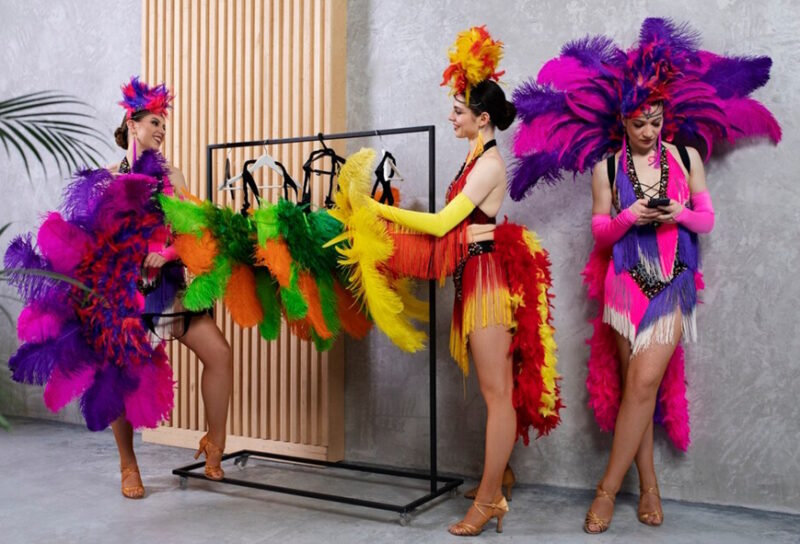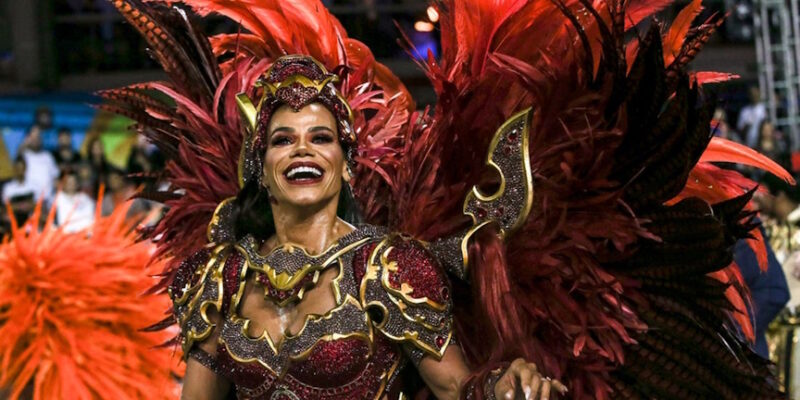
A vibrant and colorful land blessed with diverse cultures, traditions, and art forms that enrich its identity. One such integral art form that manifests the very spirit of Brazil is Samba, a dance that communicates stories of love, joy, and the quintessential culture. This embodiment of effervescent rhythm and fiery spirit, however, is not simply restricted to the steps and music but extends deeply into the Samba dance attire. The cultural significance of these costumes, including understanding samba dance costume, is profound; they tell a tale of the historical progression of Brazil’s spirit, reflecting the diverse influences and socio-economic events that have shaped it over the years.
The Origin of Samba Dance Costume: A Commemoration of Pride
The origins of the Samba dance costume can be traced back to its roots in Africa. Brought to Brazil by African slaves, Samba quickly evolved to become a symbol of resistance and pride among the enslaved population. The dresses took inspiration from the Afro-Brazilian religion, Candomblé, which worshiped Yoruba gods called Orishas. The elaborate headdresses, feathers, and beadwork were originally meant to personify these deities during religious ceremonies. Today, the flamboyant Samba costumes embody this spirit of perseverance and resilience, resonating with the pulsating rhythm of the dance.
A Legacy of Resistance and Cultural Expression
Enslaved African women, clad in the ‘Baiana’ dresses, laid the foundation for what would evolve into the modern Samba attire, blending with diverse cultural influences over time. The simplicity of the white, loose dress paired with a turban not only signified their cultural identity but also reflected their spiritual inclinations rooted in African traditions. As Samba gained popularity and permeated mainstream culture, the attire underwent a striking metamorphosis, transitioning into the dazzling and flamboyant costumes adorning Samba dancers today.
The Evolution of Samba Costume: Fusion of Cultures
As the cultural landscape transformed over time, the Samba dance costume underwent a parallel evolution, embodying a fusion of diverse cultural influences. Drawing from indigenous traditions, European fashion, and Afro-Brazilian aesthetics, the attire became a vibrant amalgamation, mirroring the multifaceted heritage of their populace. This blending of elements seamlessly integrated into the exuberant costumes donned by Samba performers in contemporary times, symbolizing dynamic cultural identity. The Samba dance costume stands as a vivid representation of the nation’s rich tapestry, where traditions converge and innovate, showcasing the enduring spirit of their cultural diversity.
The Festive Carnival Outfits: A Symphonic Burst of Colors

The most globally recognized manifestation of Samba dance attire is seen during the grand spectacle of the Brazilian Carnival. These costumes are a riotous explosion of colors and vivaciousness, designed exclusively for the event. The dancers wear sequined bikinis, feathered headdresses, and voluminous, reflective accessories that glisten in the sun with every beat of the rhythm. This ostentatious display of life was actually born out of economic necessity during the Great Depression when schools representing different neighborhoods began to compete for tourists’ attention with these brilliant displays of opulence.
Symbolism and Significance in Every Stitch
Every detail of the Samba costume is imbued with profound symbolism. The vibrant colors serve as a reflection of the lively essence of Brazilian culture, resonating with the spirit of joy and festivity. Intricate beadwork and sequins not only adorn the attire but also symbolize the resilience and unwavering of determination, reflecting their ability to thrive amidst challenges. Feathers, delicately incorporated into headdresses and shoulder pieces, pay homage to the indigenous tribes, evoking a sense of reverence for their deep-rooted connection to the land and its abundant biodiversity.
Cultural Significance of Samba Dance Attire: An Art of Resistance and Liberation
Each element of Samba dance attire carries cultural significance. Feathers, often used in the headdresses, signify honor, ascension, and the spiritual connection of the dancers with the gods, echoing the religious roots of the dance. Additionally, the bright colors represent the vibrancy and jubilation inherent in culture. During Carnival, each Samba school chooses a specific color theme for their costumes, symbolizing unity, a culture of togetherness and community strength.
Moreover, Samba costumes have played a significant role in liberating women socially. The daring cuts not only showcase the dancer’s athletic abilities but also represent the defiance of conventional norms and societal constraints. The daring, fluorescent bikinis toured the globe, bringing visibility to Brazilian women, and igniting global conversations about body positivity and freedom.
Final Thoughts
Samba dance attire is more than just clothing – it is a cultural emblem, a manifestation of a rich history of survival, adaptation, and resistance. It is an art form that nourishes cultural identity, embodies the vibrant spirit of Brazil and invites the world to share in its joy. Understanding Samba dance costume design in its historical, socioeconomic and cultural context offers an intricate insight into the heart of their culture and its indomitable spirit.